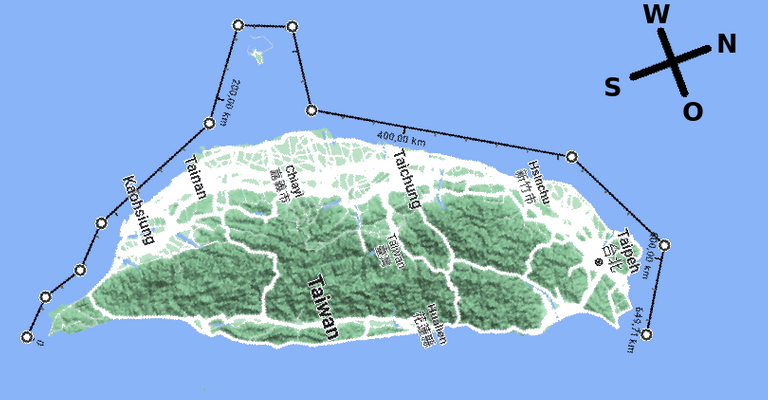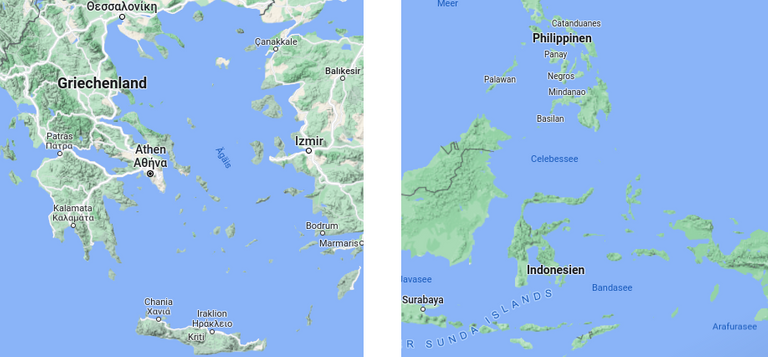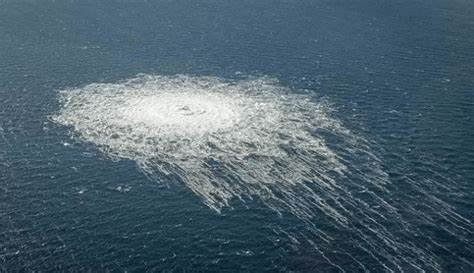Some time ago, I had the idea to sink surface vessels with the help of air pipelines with valves that open as soon as an enemy ship is right above the valve. After telling some experts about the idea, they just laughed at me. Ironically, that was only a few days before the Nordstream pipelines were destroyed, proving my idea to be very valid.
Sinking Ships Doesn‘t Cost That Much
Such a system would look more or less exactly like the Nordstream pipelines. This means that we also know what it costs to operate such a system, and now we also know what its vulnerabilities are.
Both Nordstream pipelines consist of each two pipelines of 1,200 km length, which means a total length of the pipelines of 4,800 km. In total, they cost around 20 billion Euro to build. Per kilometer, this comes down to around 500,000 Euro.
In difference to Nordstream, you would need redundant turbines at several ends to avoid an explosion at one point to shut down the entire system. This and the military grade armoring would increase the system costs by perhaps another 500,000 Euro per kilometer.
If you wanted to build a grid with 2,000 kilometers of length, this would result in system costs of 20 billion Euro. This is a lot of money, but this will last you for a long time and it would neutralize every naval threat, which means that you need less naval investments in other areas.
Assuming you pay off the investment into the system over the span of 20 years, then you end up with costs of one billion Euro per year. Running costs will double that amount, which results in two billion Euro per year in total costs for the entire system. That is a bargain, if you ask me, especially, since the costs are cut in half after the first 20 years.

Making Taiwan Bulletproof For Invasions
The most relevant place for such a system is of course Taiwan, which is under threat of being invaded by China. Topographically, the Eastern side of the Taiwanese main island is of little interest for invaders, because there are steep mountains right behind the flat Eastern coast. Defending such a geography with conventional means is too simple.
Taiwan is only vulnerable on its Western side, which stretches around 550km from North to South. On top come the Pescadores Islands in the Formosa Strait, which are also under the control of Taipei. They add around 100km to Taiwan‘s Western coastline.
If you wanted to built such a system, it is important to built it inside the 12-Mile-Zone (~22km), which is the sea area that counts to the land territory right next to it. As mentioned above, you also want redundancies, which means that you built three rows with pipelines. The outer one at around 20km away from the shore, the middle one at 12km and the inner one at 4km.
This triple redundancy will both ensure that one pipeline row can fail, but also offers tactical opportunities to lure the enemy closer in. The first time this system is used in combination with conventional surface vessel, the enemy would be very surprised about the seemingly irrational tactics applied.
Three Billions And Taiwan Is Save
For two billion Euro a year, Taiwan could have the three pipeline rows, but no interconnections. If you want to build one interconnection every 50km, you have to divide that number through the total length of the shore line you want to cover (which is 14 in this case) and then multiply the result with two times 20km, which the outer pipeline row is away from the shore.
The result is that the interconnections will need another 280km in pipelines, which can be doubled to add the distance to the turbines somewhere on land, which pressure the pipelines. In total, Taiwan would have to spend around 25 billion Euro to built the entire system. Per year and including 20% in unforeseen costs, this would come down to around three billion Euro per year.

Securing Strategically Important Naval Passages
The bigger picture clearly indicates that such a system could be a massive game changer when it comes to naval warfare and I do wonder, whether some nations might even have such systems in place already. Their price value is simply unbeatable and I cannot be the first person who came up with the idea, although some conventional thinkers imply otherwise, as I mentioned above.
Such a system wouldn‘t necessarily need to consist of pipelines, a tunnel would be just as suitable. The English Channel and the Fehmanbelt Tunnel are two prime examples, where this kind of system could be installed with little additional investment. Their effect – closing down access to the North Sea/Atlantic and protecting Denmark and North-Eastern Germany – would be dramatic. It may even be that surface navy vessels would go completely extinct.

Making The System Profitable
Both, tunnel and pipeline could produce revenue in peacetime with tunnels for travel and pipelines as a pneumatic delivery system. Maybe this could even be their cover or justification and path to fund their construction completely with private means.
Besides Taiwan, the most interesting places for such a system would probably be the Greek Aegean Sea, the Philippines and Indonesia. Greece would have to build around 3,000km to fully protect itself, the Philippines around 8,000km and Indonesia 15,000km.
Especially Indonesia would have to spend a lot of money. But the return is not only close to 100% safety from naval invasions, but also a powerful delivery system connecting virtually all 300 million citizens. Such an investment would be paid off in just a few years, even if the total costs would amount to 300 billion Euro.
If I had the investment money, I‘d totally offer that to Taiwan and the others. What would you do?

What should be the advantage over a minefield? It's cheaper, faster (the bubbles take some time from the ground), harder to destroy, detect, and a proven technology. I would think Taiwan already has such a system. And maybe the Chinese already have hovercrafts as landing vehicles but I don't know.
Mines are also bad for your own ships.
Not so sure about that. Nordstream 2 took only two years to complete. If you deploy a minefield of 100km x 10km you need around one million mines. If one mine takes 6 minutes to deploy, then you need 10 years for all of them (or one year with ten ships). Then even the discount version of mines would cost at least one billion Euro plus they have a "best before date" because of seawater corrosion.
Even fast ships are relatively slow and since the pipelines are close to the shore, you can detect them visibly. That shouldn't be a problem. The pressure from the turbines simply has to be strong enough.
Hovercrafts would either likely sink as well, or they would be easy targets because of a lack of armor.
Thanks for the input.
Why would be such a system dangerous for marine vessels? They would just navigate through the bubbles and that´s it. They are constructed to resist heavy storms.
A ship will sink when it is heavier than the water below it. Air bubbles replace the water, which reduces the overall water density.
But the bubbles aren´t big enough to be a threat. How big can they be if just one pipeline is their origin, even if the gas expands? Will you rip open the pipeline over several dozen meters? They also get diluted once they rise up.
The methane bubble area in the image has a diameter of 200 meters. That's enough for an entire aircraft carrier. Expansion is not necessary, the turbine(s) just have to be strong enough to keep pushing air into the pipeline.
You do that with a valve every 100 meters or so. I should have mentioned that in the text. :-)
That's ok. It just has to be enough to replace ~20% of the water below the ship. Then it sinks.
It didn't take much for the US, ETs or whoever to destroy the pipeline, so even if the idea would work, the pipes would need to be armoured or otherwise treated that would push the price up quite a lot. Plus, maybe they could be hacked and turned against your own ships! The only workable solution for peace is to consistently focus on healing, balancing and evolving.